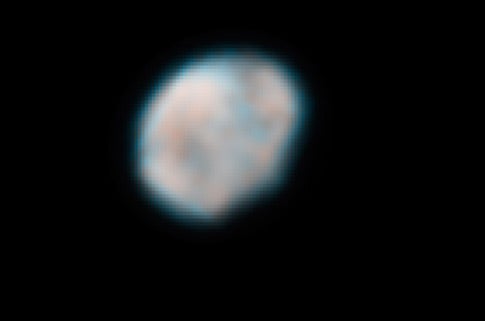A nalysis of the chemical composition of two asteroids in the outer asteroid belt has thrown the classification system for these small bodies into disorder. “We appear to have detected basalt on the surface of these asteroids, which is very unusual for this part of the asteroid belt,” said Dr. Rene Duffard of the Instituto de Astrofisica de Andalucia in Spain. “We do not know whether we have discovered two basaltic asteroids with a very particular and previously unseen mineralogical composition or two objects of non basaltic nature that have to be included in a totally new taxonomic class.”
The presence of basalt means that the asteroid must have melted partially in the past, which implies that it was once part of a larger body with internal heating processes. However, there do not appear to be other basaltic fragments in the region. It is not clear from spectral analysis whether the two are fragments of the same parent body or not.
Until recently, most of the known basaltic asteroids, classified as V-type, were thought to be fragments of Vesta, the second largest object in the asteroid belt. Since 2001, several V-type asteroids have been identified as not belonging to the Vesta family, including Magnya, the first basaltic object to be detected in the outer asteroid belt.
Duffard and his colleague, Dr Fernando Roig, from the Observatorio Nacional in Rio de Janeiro, Brazil, selected asteroids Kumakiri and 1991 RY16 for investigation from a group of six candidates for V-type asteroids using photometric data from the Sloan Digital Sky Survey (SDSS).
The reflectance spectra of the two bodies seem to show the characteristics of a V-type asteroid. However, there is a shallow absorption band around the wavelength of red visible light, which has never been observed before in other V-type spectra. This means that these objects have a slightly different chemical composition and do not fit into any existing category of asteroid. The unexpected dip in the spectra could have two sources: impacts with other asteroids or comets that “shocked” iron-rich compounds into a oxidized state, or olivine, a green mineral, could be present.
“We need now to observe both objects in the near-infrared range to confirm whether they have a basaltic surface,” Duffard said. “If they do, we will need to try and work out where they came from and the fate of their parent objects. If they do not, we will have to come up with a new class of asteroid.”










